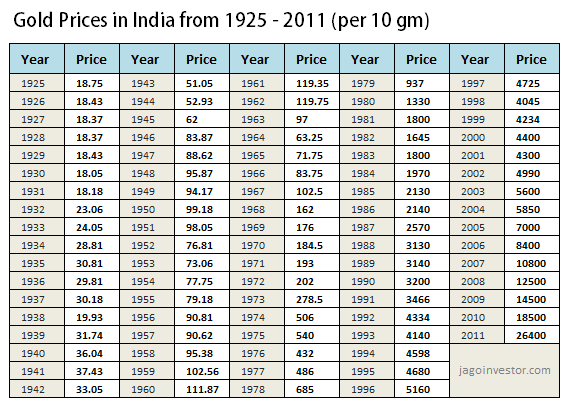Содержание

A company can be insolvent and still produce regular cash flow as well as steady levels of working capital. Many companies have negative shareholders’ equity, which is a sign of insolvency. Negative shareholders’ equity insinuates that a company has no book value, and this could even lead to personal losses for small business owners if not protected by limited liability terms if a company must close. In essence, if a company was required to immediately close down, it would need to liquidate all of its assets and pay off all of its liabilities, leaving only the shareholders’ equity as a remaining value. Liquidity relates more to short-term cash flow, while solvency relates more to long-term financial stability. The current ratio is the total current assets divided by total current liabilities.
‘liquid market’ means a market where financial instruments can readily be converted through an act of buying or selling without causing a significant movement in the price. ‘deep market’ means a market where transactions involving a large quantity of financial instruments can take place without significantly affecting the price of the instruments. Gain in-demand industry knowledge and hands-on practice that will help you stand out from the competition and become a world-class financial analyst. If debt increases without corresponding upticks in either assets or earnings, it could be a bad sign of things to come. The Structured Query Language comprises several different data types that allow it to store different types of information… These include white papers, government data, original reporting, and interviews with industry experts.
The guidelines are generally known as Solvency II and stipulate higher requirements for property and casualty insurers, and life and well being insurers. For occasion it would include assets, similar to stocks and bonds, that can be offered rapidly if monetary situations deteriorate quickly as they did in the course of the credit score crisis. The ratios which measure companies liquidity are often known as liquidity ratios, that are current ratio, acid check ratio, quick ratio, and so forth.
Investment Financial Analysis
For such a reason, it should be used alongside other types of analysis to provide a comprehensive overview of a business’ solvency. Financial solvency is defined as the ability of a person, business or organization to pay their debts and have cash to pay for future needs. An example of financial solvency is a company that can meets its long-term fixed expenses. In other words, I wish to see an agribusiness have at least $1.50 in current assets for each $1.00 of present liabilities. Personally, I do not like to see this ratio go above 3.0 – this tells me that the agency may have too much of their property in liquid, non-incomes belongings, and this will hurt your profitability.
Biden Prepares Largest Military Budget in History The Fiscal Times – The Fiscal Times
Biden Prepares Largest Military Budget in History The Fiscal Times.
Posted: Fri, 10 Feb 2023 08:00:00 GMT [source]
Commercial paper—short-https://1investing.in/ debt that is issued by large companies to finance current assets and pay off current liabilities—played a central role in this financial crisis. The current ratio measures a company’s ability to pay off its current liabilities with its current assets such as cash, accounts receivable, and inventories. Some of these ratios are technical—of use primarily to auditors or corporate analysts. You can obtain the data necessary to assess the solvency of your company or another company by looking at the company’s financial statements.
Solvency Ratio
To evaluate a given firm’s actual long-term financial stability, you need to calculate several different solvency ratios and compare them with industry averages. To be solvent generally means an ability to enjoy levels of financial freedom that are not available to insolvent businesses and individuals. Simply put, solvency is a representation of the ability a company has to meet its financial obligations. Liquidity represents the ability that a company has to meet its short-term obligations.
- A solvency ratio is a key metric used to measure an enterprise’s ability to meet its debt and other obligations.
- The ratio looks at how much of the debt can be covered by equity if the company needed to liquidate.
- The main solvency ratios include the debt-to-assets ratio, the interest coverage ratio, the equity ratio, and the debt-to-equity (D/E) ratio.
Horizontal, vertical, and ratio analysis are three techniques analysts use when analyzing financial statements. Solvency is essential to staying in business as it demonstrates a company’s ability to continue operations into the foreseeable future. Solvency ratios are any form of financial ratio analysis that measures the long-term health of a business. In other words, solvency ratios prove that business firms can honor their debt obligations. Bottom-up investing forces investors to considermicroeconomicfactors first and foremost.
Other Ratios
Essentially, if a company is forced to close down immediately, it would then liquidate its assets in order to help pay off its liabilities. Having no book value can lead to small business owners seeing personal losses if they’re not protected by certain limited liability terms. Read on as we take a look at exactly what solvency is, how it works, how to calculate it, and how to assess the solvency of your own business. Trend analysis is a technique used in technical analysis that attempts to predict future stock price movements based on recently observed trend data.

The potential for states to reform their fiscal policy to ensure sustainability is typically oriented around institutional independence and covering the cost of aging over a longer time horizon. As public pension spending is the most affected by the demographic shift of aging at the EU level accounts for 11% of GDP it is critical to develop reforms that anticipate this trend. The best example of such a far-reaching liquidity catastrophe in recent memory is the global credit crunch of 2007–09.
Fiscal sustainability
Investors, shareholders, and financial institutions use this metric to examine a company’s financial health. While companies should always strive to have more assets than liabilities, the margin for their surplus can change depending on their business. Solvency is a long-term measure of a business while liquidity is a short-term measure that looks at how quickly a business can sell its assets. This solvency ratio example is a common solvency formula, but others may be used. A company may have high liquidity but not solvency, or high solvency but low liquidity. In order to function in the market place, both liquidity and solvency are important.

Adjusting the size of the benefits entails reducing the benefit ratio, i.e. “the generosity of pension entitlements”. These reforms can stabilize public pension expenditure but it has the potential to create tension and instability politically. Debt To Equity RatioThe debt to equity ratio is a representation of the company’s capital structure that determines the proportion of external liabilities to the shareholders’ equity. It helps the investors determine the organization’s leverage position and risk level. The debt-to-assets ratio measures a company’s total debt to its total assets.
Financial analysis is the process of evaluating businesses, projects, budgets, and other finance-related transactions to determine their performance and suitability. Typically, financial analysis is used to analyze whether an entity is stable, solvent, liquid, or profitable enough to warrant a monetary investment. Investors and shareholders analyze a company’s solvency based on shareholders’ equity. Shareholders’ equity is the difference between total corporate assets and total liabilities. A solvency ratio terminology is also used when evaluating insurance companies, comparing the size of their capital relative to the premiums written, and measures the risk an insurer faces on claims it cannot cover. There are also other ratios that can help to more deeply analyze a company’s solvency.
Solvency is one measure of a company’s financial health, since it demonstrates a company’s ability to manage operations into the foreseeable future. Solvency is the ability of a company to meet its long-term debts and other financial obligations. A company’s cash flow statement also provides insight into a company’s solvency. This can show if a company has a large amount of outstanding debt, how much is going toward repaying debt and how much resources are available to cover current and upcoming debt payments. Liquidity refers to a company’s ability to obtain cash quickly to cover short-term expenses and debts.
In its monetary policy statement in May 2008, the RBI mentioned that sometimes, the objective of financial stability becomes more important than the objective of price stability. It can uncover a history of financial losses, the inability to raise proper funding, bad company management, or non-payment of fees and taxes. Solvency and liquidity are two ways to measure the financial health of a company, but the two concepts are distinct from each other. On the flip side, the company can be considered insolvent if the realizable value of its assets is below the total liabilities. Vertical analysis entails choosing a specific line item benchmark, then seeing how every other component on a financial statement compares to that benchmark. A company would then compare cost of goods sold, gross profit, operating profit, or net income as a percentage to this benchmark.
Your bookkeeper or accountant can certainly help you decipher your financial reports to make the calculation. If your business has sufficient Accounts Receivable, for example, to pay all your bills along with meeting your other operational expenses, your business would be considered liquid. If you run out of cash flow every month and can’t meet all your financial obligations, you would not have achieved liquidity. Liquidity is related to solvency, but they are not the same thing and are sometimes confused. Liquidity indicates if your company has the liquid assets it needs to meet its financial obligations on time.
Republicans Have Plan to ‘Tackle’ National Debt, Rep. Ralph … – Daily Signal
Republicans Have Plan to ‘Tackle’ National Debt, Rep. Ralph ….
Posted: Fri, 03 Mar 2023 08:01:29 GMT [source]
Emerging economies show a stronger response and hence converge to lower mean debt–output ratios, as observed in the data. The results are weaker for countries with debt ratios exceeding panel means and medians. Hence, we can separate countries where fiscal solvency holds from those where it remains in doubt. Others are easily assessed by accountants, business owners, and investors alike. Keep reading for examples of how to calculate solvency ratios, how to use them in your analysis, and how these formulas differ from liquidity ratios. When interpreting the values for solvency ratios, it’s important to consider the context.
International Evidence on Fiscal Solvency: Is Fiscal Policy “Responsible”?
These fiscal solvency meanss are used within the credit evaluation of the firm by collectors, suppliers and banks. The solvency ratio measures an organization’s ability to meet its long-time period obligations because the formulation above signifies. The current ratio and quick ratio measure a company’s capacity to cover brief-time period liabilities with liquid assets.
For example, a company with a solvency ratio of 1.2 is solvent, while one whose ratio is 0.9 is technically insolvent. A high solvency ratio shows that a company can remain financially stable in the long term. In liquidity ratios, assets are a part of the numerator and liabilities are within the denominator.
If this happens, the lender could assume cash flows will increase due to the expansion and repayment obligations wouldn’t be an issue. Short-term assets and short-term liabilities have a time frame of less than one year. For example, cash and cash equivalents is a common example of a short-term asset. One of the easiest ways to do this is by subtracting the short-term liabilities from the short-term assets. This is essentially the same calculation you would use to determine working capital, which shows the amount of money a company has available to pay upcoming bills. A company that has a negative shareholder’s equity on its balance sheet can be common for startups, recently offered public companies, or developing private companies.
0 Comments